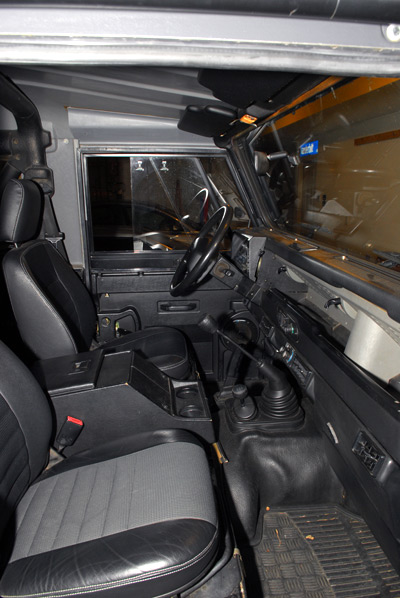
A "before" shot of the standard two-piece door setup from the inside.
The two-piece soft top doors are nice when the top portion is off, but for many driving conditions, they're a nightmare. The windows rattle on bumps and when closing the door, they let plenty of water in, the sill is quite high, and the horizontally-opening windows are awkward.
Converting to Station Wagon doors can help to solve these inconveniences and, since this D90 has a "permanent" fiberglass hard top, it will fit in aesthetically. The SW door installation is also the first phase of the full Station Wagon conversion that is planned for this D90. More on that at some point in the future.
In preparation for this project, a set of new doors were stripped down to the bare metal, re-sprayed in Beluga Black, then reassembled. See the Project Notes for more information.
Time to get started:

A "before" shot of the standard two-piece door setup from the inside.
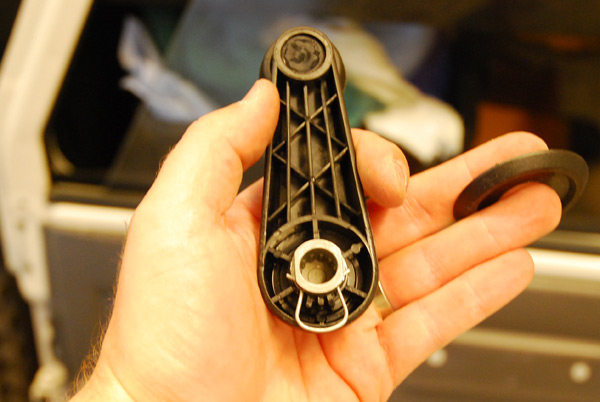
Door preparation: take the handle off first.
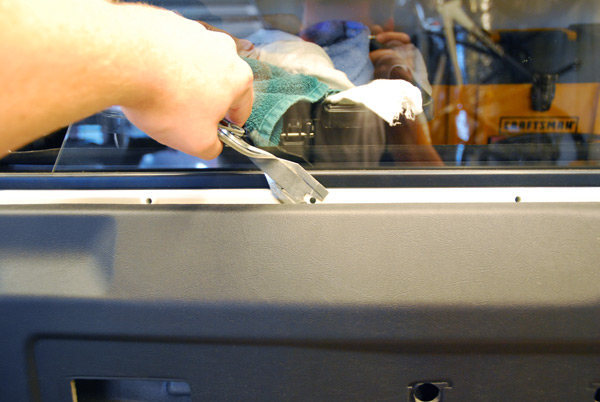
Door preparation: the door card is easily removed with a fir tree removal tool.

Beneath the door card is a layer of foam insulation - you won't find this on those flimsy two piece doors!
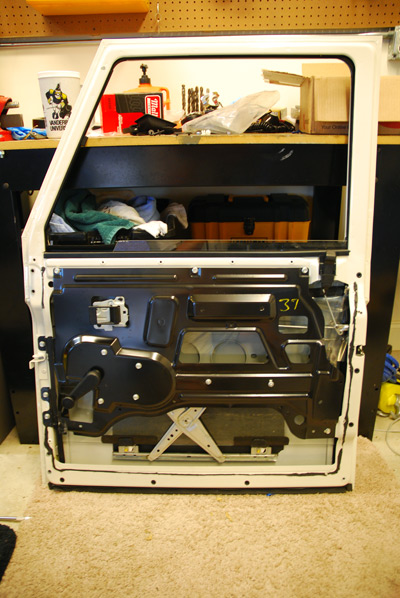
The whole window carrier frame (black) can be removed as one unit after unbolting the glass. (Handle shown installed just for illustration)
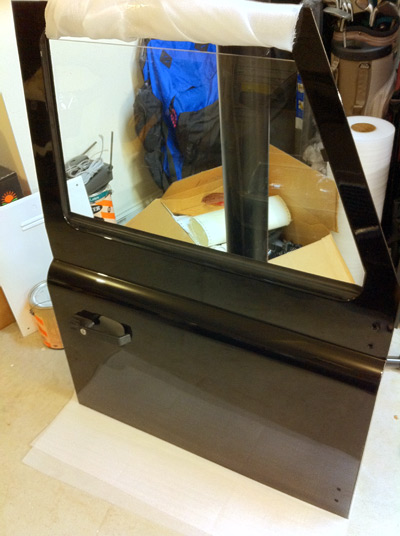
Door, back from being resprayed and mostly-reassembled. Ready for installation!
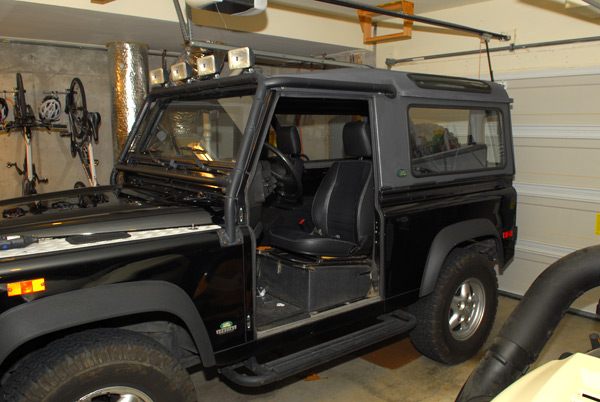
The destruction phase is underway, with one door off.
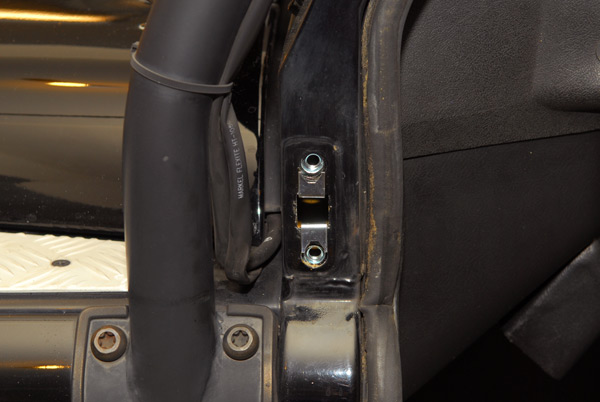
The doors attach to the bulkhead with these captive nuts held by a U-clip carrier. If you're using new bolts, note that the thread pattern is different than the original bolts - you'll need to get new captive nuts (or new clips with nuts, as supplied by Land Rover).
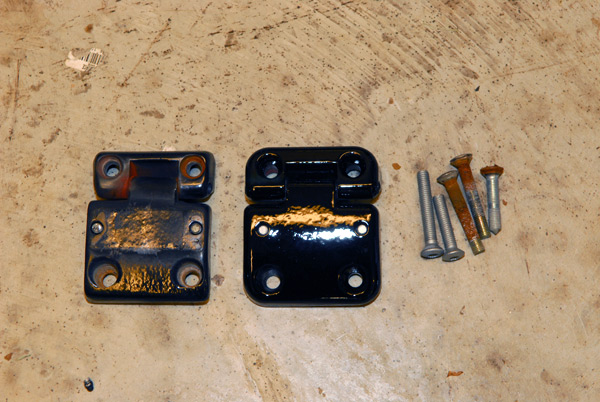
Along with the new SW doors, this Defender will get new hinges and fasteners. The benefit here is that these "new-style" hinges don't rust like the old ones, which will result in a nicer-looking and better-functioning product. The new Genuine bolts are alloy, as opposed to the old zinc-plated steel bolts, to completely stamp out that ugly hinge rust. Good riddance, rust!
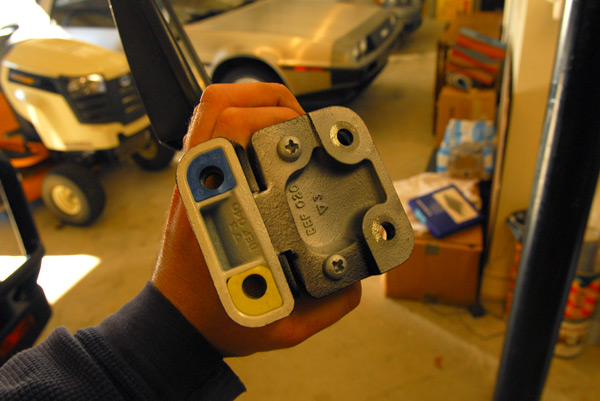
It's not seen from the outside at all, but even the old mirror fasteners will get replaced with new alloy bolts.
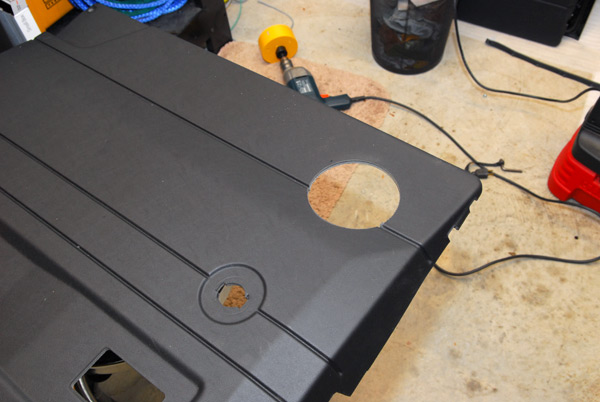
A hole is cut in the door card in the proper spot to accommodate the speaker. Another hole (not shown) is bored for the wire flex tube. After this step, the doors are reinstalled, Waxoyl is sprayed in the door cavities (despite the fact that these are new-style doors with galvanied frames), the foam insulation is reattached, then the trim is attached and the speakers mounted.
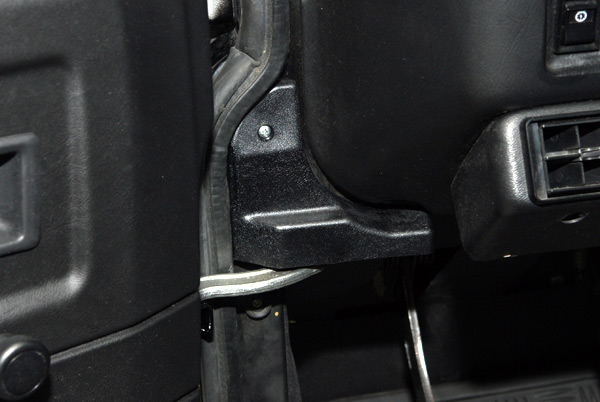
The worthless 1994 door checks were binned and replaced with these new-style checks, which are mostly hidden by this cover...
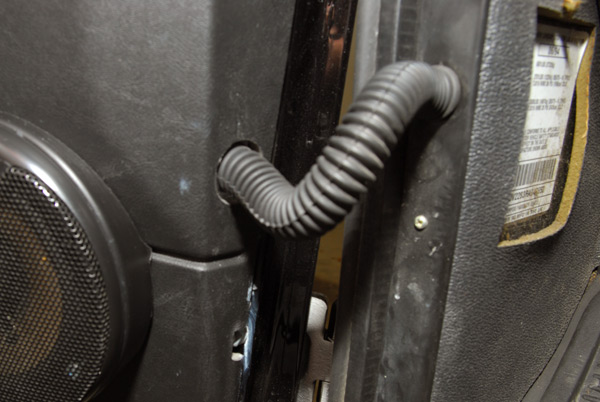
An aluminum plate was fabricated to hold the flex tube, which is attached to the inside of the door card. Since the outer cutout is exactly the size of the flex tube, the plate is completely hidden.
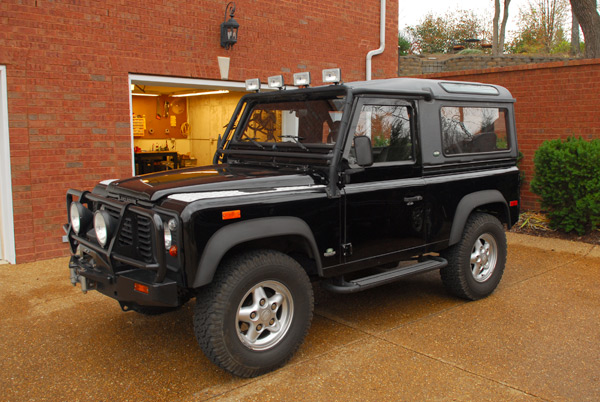
The finished product: 1994 Beluga Black ST with SW doors.
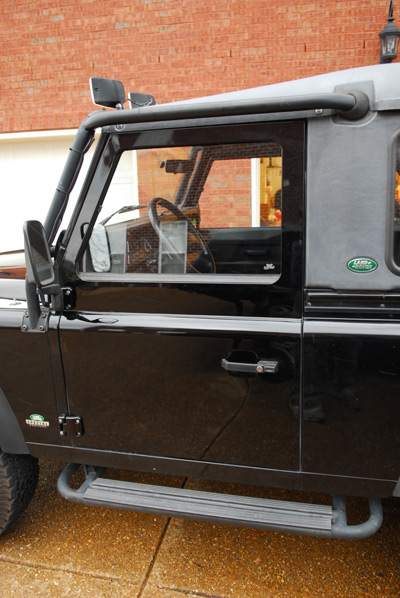
These doors are a lot more functional when a hard top is being used. They're also better-insulated for those cold days.
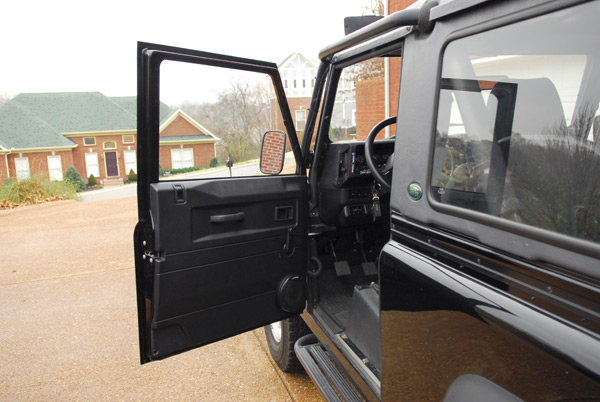
The black door cards blend well with the interior. And these new doors close with a supple "thump" - a stark contrast to the cacophony of rattles that accompanied shutting those two-piece doors.
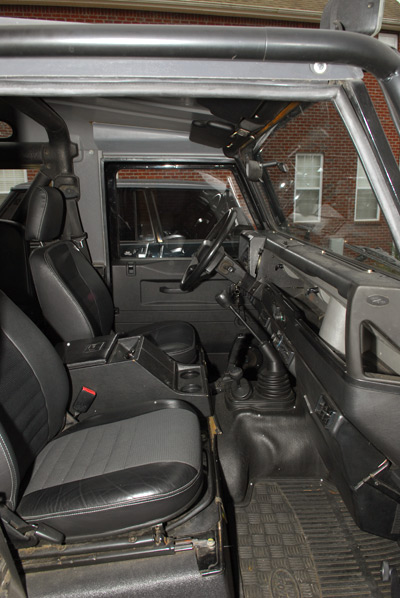
The interior looks leagues better too - much more refined than those primitive two-piece doors. The biggest habit to break is reaching towards the rear of the door for the latch to open it.